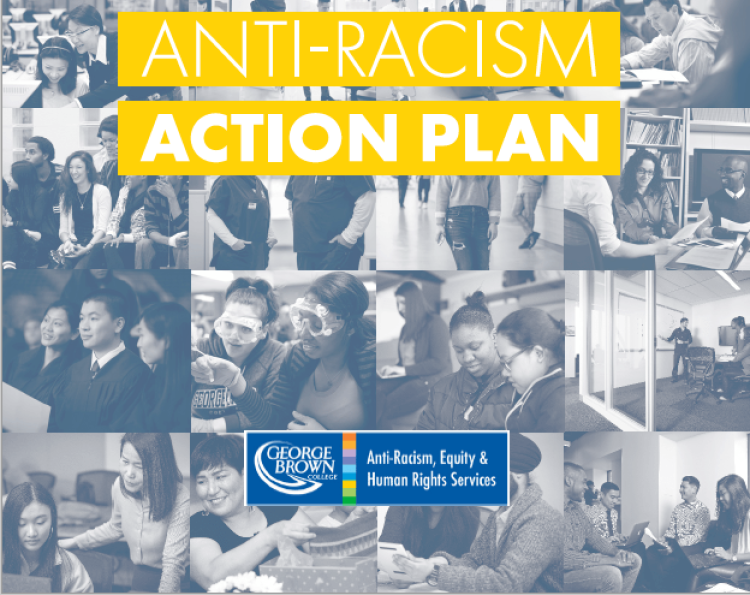Introducing our Anti-Racism Action Plan
Over the years, we at George Brown have acknowledged and affirmed our commitment to addressing racism and inequities and engaging in anti-racism, equity, and inclusion efforts. The past year has precipitated an opportunity for deeper reflection on how we will demonstrate our commitment. What we have heard from leaders, employees, and students who have shared their stories and provided feedback and insights is that George Brown needs to move forward more boldly. Our deeds must match our commitments. Meaningful action is needed, and the time for more action is now.
Find out how we’re taking meaningful, deliberate, and sustained action to address racism, inequities, and discrimination.

How can you contribute to the action plan?
As members of the George Brown College community, we all have a role to play in implementing and supporting our Anti-Racism action plan. To discover what your role is, select your employee group below and the corresponding action items will be presented.
How has the action plan been developed?
- 1 Strategy 2022/Vision 2030
- 2 2019 Review
- 3 2020 Anti-Racism Strategy
- 4 Anti-Racism Consultative Review
- 5 2022-2024 Anti-Racism Action Plan
Strategy 2022/Vision 2030
Before we could arrive at the action plan, we need to set values and priorities through the college's Strategy 2022/Vision 2030.
2019 Review
In 2019, we underwent a review of our foundational recommendations.
2020 Anti-Racism Strategy
In 2020, we launched our Anti-Racism Strategy that focuses on addressing and improving community inclusivity and outcomes for racialized students and employees.
Anti-Racism Consultative Review
In 2021, we continued to review and revise the Anti-Racism Strategy by gathering input from stakeholders across the college.
Anti-Racism Strategy Review Consultative Process
- Anti-Racism Strategy Review Task Force (August 10, 2021)
2022-2024 Anti-Racism Action Plan
This plan was developed with the future in mind, knowing that to begin this journey together, we need to set a foundation and chart a clear and dynamic course to enable all community members, leaders, employees, and students to see themselves in the plan.

A place to belong.
We support initiatives that challenge us to deeply reflect on our practices, policies, and procedures and inspire us towards action. It's essential that we create an equitable and inclusive learning and organizational culture/climate that is free of racism in all its forms.
Laying the groundwork for racial equity.
Our Commitment
Enhance leadership and governance that places anti-racism and equity at the heart of our institutional practices.
Our Culture & Climate
Create an Inclusive, affirming, and celebratory learning ecosystem and working environment for students and employees.
Our Curriculum
Teach learning and research approaches that are not only representative, affirming and inclusive, but also eliminate disparities, and produce positive racial outcomes.
Our Capacity & Capabilities
Experience a highly knowledgeable and skilled community with expanded abilities and expertise to address racial inequities and promote racial equity.
Our Community
Build a community that is representative, inclusive, empowered and meaningfully supported with local, regional and global partners.
Moving forward, we all need to engage in this work, which may at times be challenging and uncomfortable, but also powerful and rewarding. It is work aimed at creating the George Brown of the future – it is also work that is fundamental in creating an inclusive Canada that is a beacon of hope and opportunity to all.
– Dr. Gervan Fearon, President
WE’RE PUTTING IN THE WORK.
We believe that in order to end racism in our community, we must all come together. It’s up to all of us to promote anti-racism, equity, diversity and inclusion.

WE HAVE BIG GOALS AND BIGGER PLANS.
To accomplish our goals, we must move forward boldly. We must practice what we preach. Discover the actions we’re taking for our community now and for the future.

